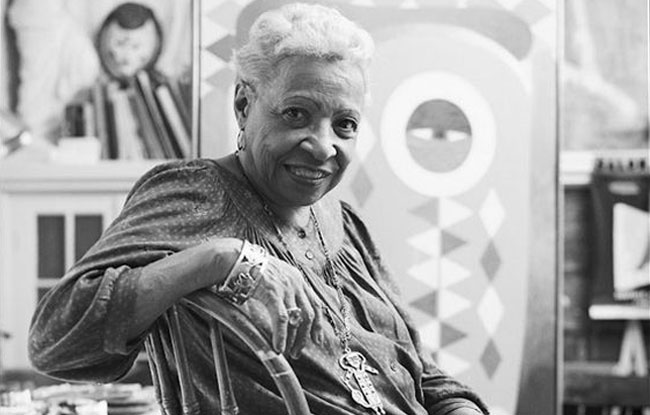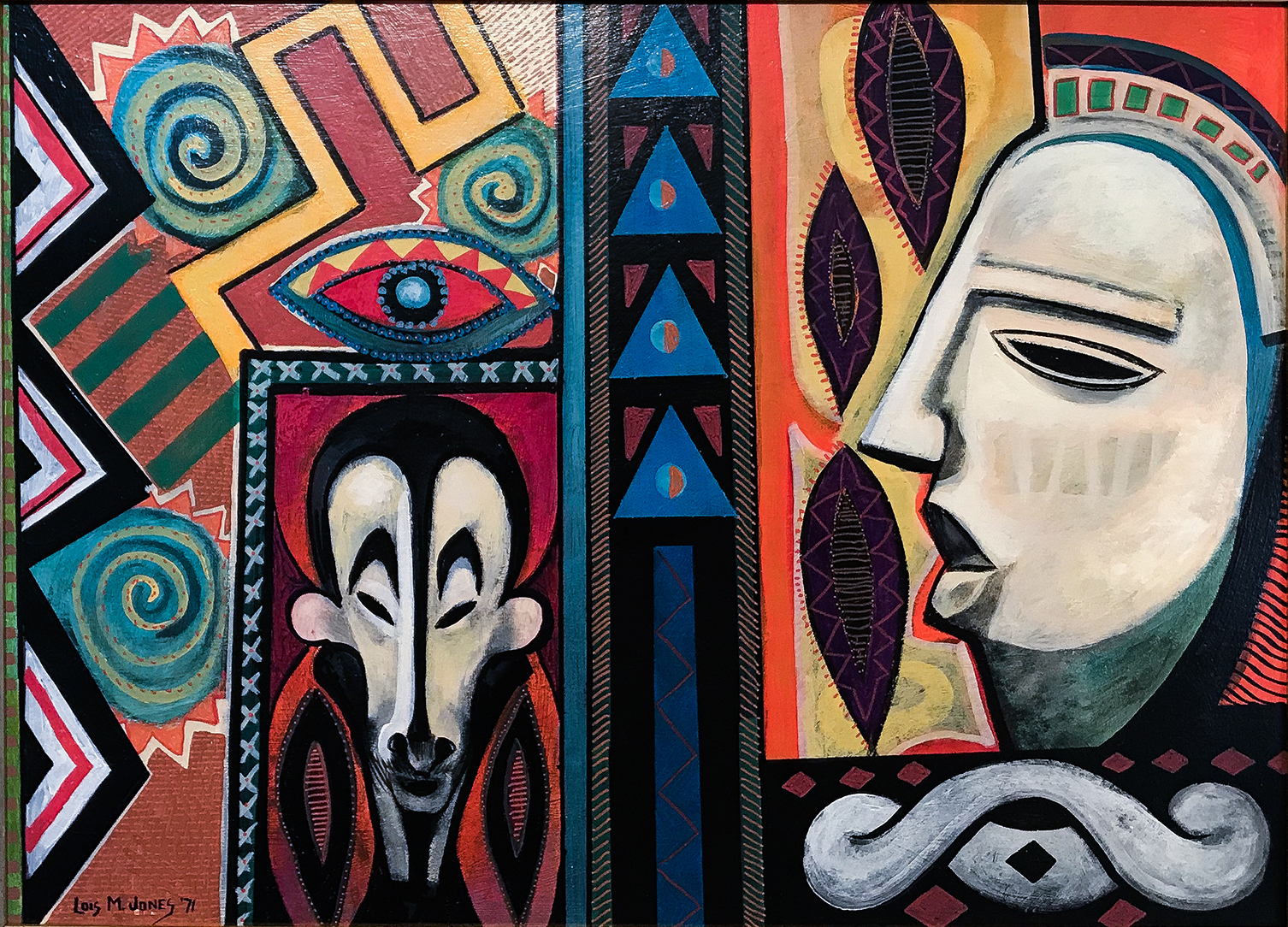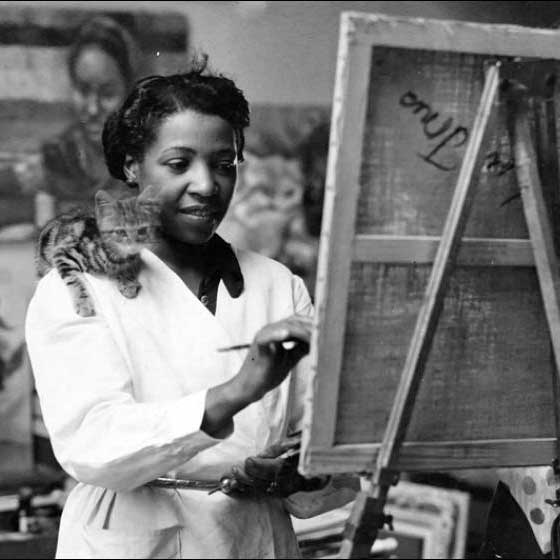
As a black female painter, Lois Mailou Jones (1905-1998) was well aware of the upward battle facing her in order to succeed in the art world. Born in Boston, Jones grew up in a building supervised by her father. After attending night school to get his law degree, however, Mr. Jones switched career paths, for which Jones credits him as a major inspiration for her own work ethic.1 The Jones family vacationed at Oak’s Bluff in Martha’s Vineyard, a place that Jones praised for its inclusivity and enthusiasm for its resident artists. Inspired by nature, Jones would paint watercolors of the island.2 Her parents, supportive of their daughter’s creativity, sent her to an arts high school and to extracurricular arts classes at the Museum of Fine Arts. Jones then received a full scholarship to the Museum School where she majored in design. Right out of school, Jones began a successful career in the textile design industry.

Dream of Nigeria
Following Jones’ immediate career boom, she experienced two events that would shape her outlook on her career and lead her to join Howard University’s art department in 1930.3 The first was a visit to a design firm where Jones saw a print of hers, Ganges, upholstered on their furniture. When she showed the head designer this print in her portfolio, he was so surprised that he called down all of his colleagues to look at this “colored girl” who had designed the Ganges fabric.4 This experience was an early wakeup call to Jones that her racial identity, whether she liked it or not, would impact her career. She also became aware of the limitations of the design world, namely its anonymity.5 This prompted Jones to leave textile design in favor of painting, hoping that high art would bring her name recognition.6

However, when Jones approached her alma mater of the Museum School asking for a teaching position in fine art, they turned her down and instead suggested that she “go down South and help [her] people.”7 Rejected from her hometown, Jones did indeed head south to Howard. Despite the circumstances, Jones enjoyed a successful teaching career and artistic success while at Howard, traveled to Europe and Asia with students, while also keeping in dialogue with many important black cultural advocates.8 Jones’ art always gravitated to the styles of Post-Impressionism and early Modernism, but her work went through multiple phases of heavy African diasporic influence, most notably from Haitian culture. 9
However, Jones did not want her identity to affect the public’s reading of her artwork. Seeing how she was put on spectacle and ghettoized early in her career, Jones’ concern was that her artistic merit would be ignored. She refused to be hindered by her race or gender, and thus obsessively managed her public persona. Friend and writer Tritobia Hayes Benjamin said of Jones, “Lois was the quintessential self-publicist… She had every newspaper, report, and other documentation relating to her career and its development.”10 By keeping all public records of herself and her art, Jones knew exactly how the media was reading her and how to present herself to curators, collectors, journalists, and so forth. Jones also refused to deliver her artwork to galleries herself, or even accept awards in public. Instead, she would have one of her white friends do it for her. 11 Jones defended her right to remain faceless, saying, “I felt it was better to get as strong as possible before I let them know that Lois Jones was Black.”12 Jones had a vision of how she should appear to the public and tried everything in her power to maintain that vision.
Such control undoubtedly helped Jones advance her career. However, in order for Jones to receive the level of success that she desired, she had to maintain a certain degree of anonymity. Jones regretted that she had to prove herself as an artist and had to fight against the modifiers “African American” or “female.” With careful control over her public image, however, Jones fought against classification and lifted herself into the world of high art.
SOURCE: CLICK HERE

CLICK HERE TO FIND MY RESOURCES TO HELP YOU TEACH ABOUT BLACK ARTISTS
